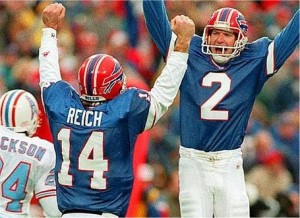A couple of weeks ago, I wrote about a method of calculating a team’s win probability at the end of any given quarter, given the pregame Vegas line and the score margin of the game after the quarter in question. Today, I want to break down those numbers in more detail by looking at which teams (and quarterbacks) added the most Win Probability in each stage of the game.
To compute Win Probability Added (WPA) for the purposes of this post, you look at how much the team’s chances of winning changed from one quarter to the next. For instance, here’s how I’d deconstruct Monday night’s game for the winning Bears:
WPA_loc and WPA_vegas are the two components that make up the pregame win expectancy. Chicago was on the road here, which typically deducts about 8% from a team’s base 50% WP right from the get-go (or roughly 2.5-3.0 points of spread), and on top of that they were 3.5-point underdogs, which put their pregame WP another 2.1% lower than you’d expect from an evenly-matched road team. All told, before the opening kickoff, they were already down about 10% in terms of WP.
Then both teams had a scoreless first quarter, which added 1.3% to Chicago’s total under the WPA_1st banner. This happened because, even though they were still tied, there was less time remaining in the game during which Dallas could exert their theoretical talent advantage (the variance of the future was likely to be higher, which always favors the underdog).
Chicago took a 10-7 lead in the 2nd quarter, which tacked on 13.7% of WP, as seen under WPA_2nd. By this point, they had erased their early 10% deficit and were actually favored to win with a WP of 55.1%. A 14-3 3rd period was the killer, though, adding 42% of WP in the WPA_3rd column. Going into the final quarter with a 24-10 lead, the Bears had a 97.1% chance of winning; when they didn’t relinquish that lead, the remaining 2.9% of WP were added under WPA_4th, since the game was over.
And as is the case with every winning team ever, their WPA_tot for the game was +0.500.
See how it works? By using WPA in this manner, we can detect when in the course of the game a team adds or subtracts the most from its chances of victory. We can also add these WPA numbers up across games at the season level, or even for entire careers.



